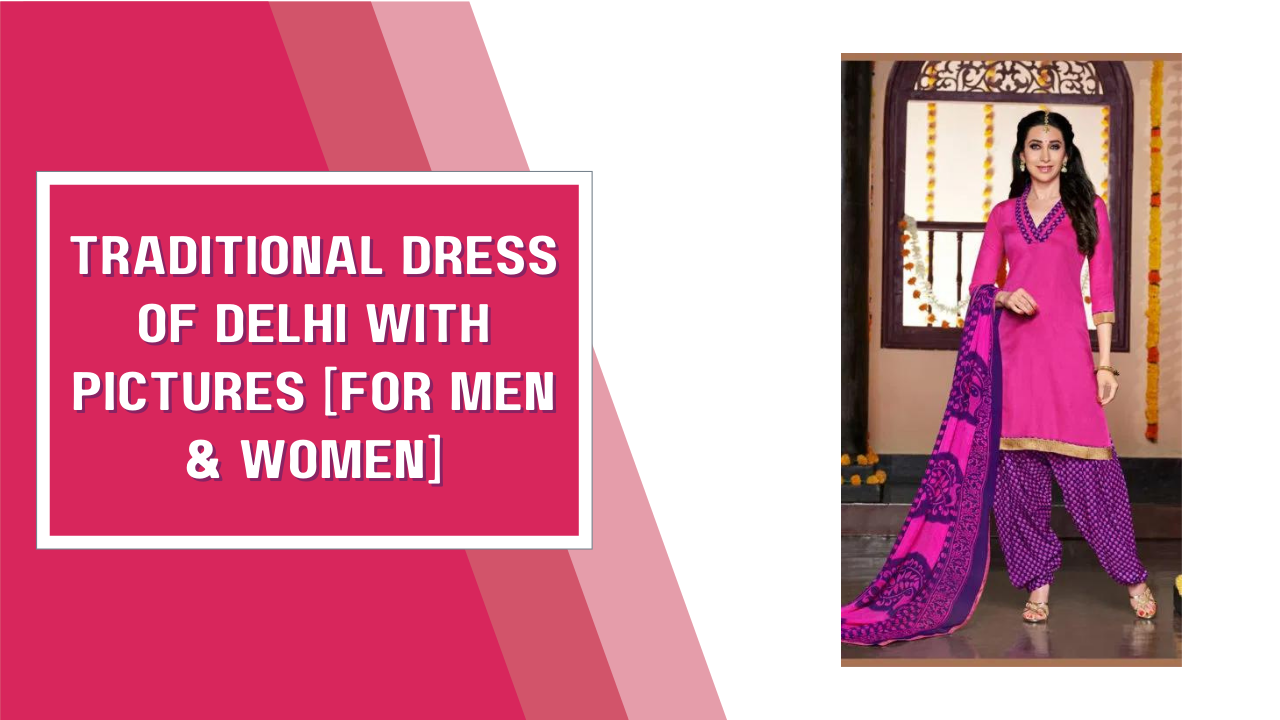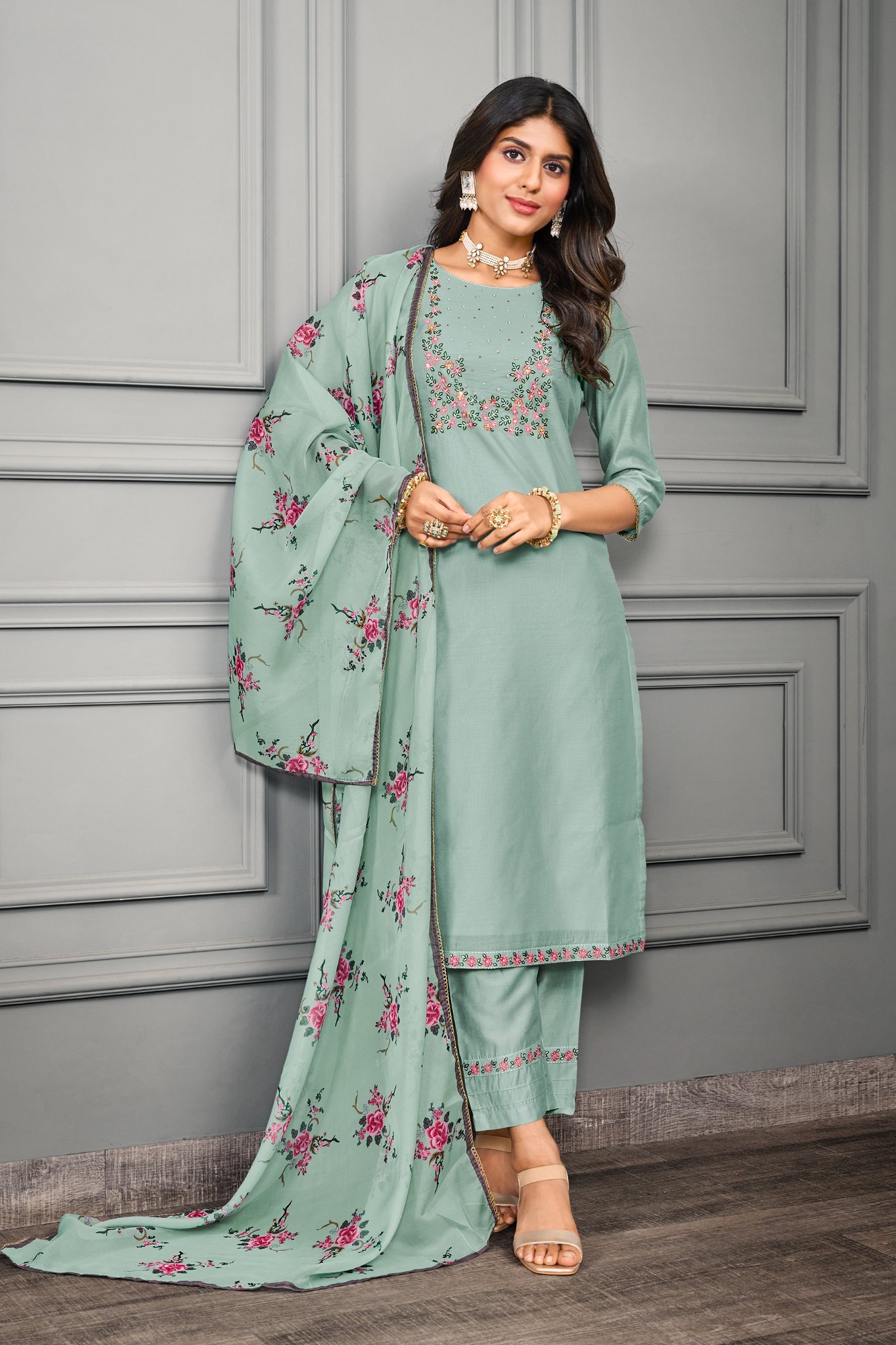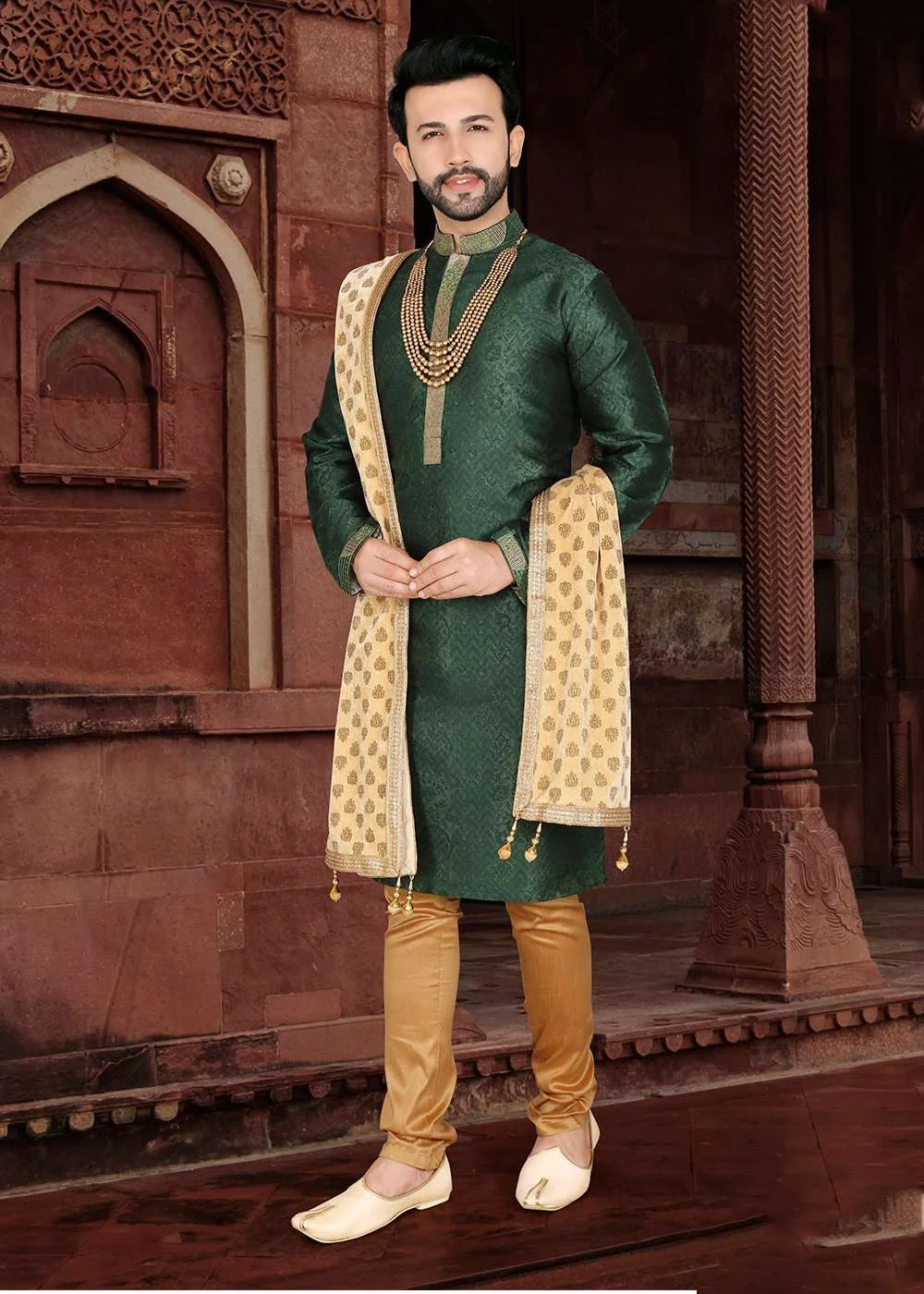Traditional Dress Of Delhi With Pictures For Men & Women

Traditional Dress of Delhi Male And Female
Delhi's traditional dress is stunning in design and style. The traditional attire of India's capital city is salwar kameez for females and kurta pyjama for males.
Because people from all over India and the rest of the world live here, there is no distinct culture or heritage. Delhi's open democracy and exquisite variety are well-known worldwide.
People from many states have migrated to Delhi for trade, education, employment, and other reasons. They use various colours to create a strong culture. Delhi is a vibrant and fashionable city where the western way of life has a greater influence on children and adolescents.
Traditional Dress of Women in Delhi

The mixed people have their own traditions when it comes to choosing costumes. The most envious women are those who wear a salwar-kameez with a dupatta. This outfit is extremely popular among young women in India.
The Turko-Mongol and Turko-Persian designs were introduced to India. Since then, this garment has gained widespread recognition and has become a wardrobe staple.
Affluent women create and buy salwar suits with one-of-a-kind needlework that incorporates expensive stones and artwork into the pattern. Ordinary ladies wear such expensive clothing on special occasions such as weddings, parties, and festivals.
Women wear sarees in a variety of colours, designs, tints, and patterns. Exclusive embroidery is created by well-known fashion designers such as Ritu Kumar, Sabyasachi Mukherjee, and Neeta Lulla using techniques such as Zardozi, a Persian type of needlework done with gold or silver thread.
Furthermore, various paint and cutwork styles are used. Females in Delhi dress in Ghagra Cholis, Saris, and other traditional costumes. In general, students prefer to dress in western attire.
Traditional Dress of Male in Delhi
Traditional outfits such as the Kurta Pyjama and the Sherwani are popular choices for men in Delhi. In contrast, the majority of boys and men now wear a shirt, trousers, jeans, and a tee-shirt. The kids have embraced the influence of contemporary culture and enjoy dressing extravagantly.
Sherwanis are traditional ethnic clothing worn by men in Delhi. Sherwanis, which are adorned with stones, sequins, and other dazzling embellishments, are a remarkable aspect of New Delhi's culture and heritage. In addition to traditional attire, men in Delhi wear western clothing such as trousers and formal suits.
Final Thoughts
Women's ethnic clothing in Delhi is mostly wholesale salwar kameez, which comes in a variety of variations and fashion styles. They frequently include Zardozi embroidery as well as influences from other parts of India.
The men wear pajamas with a Kurta or Sherwani on top. As a result of Delhi's metropolitan nature, ethnic apparel from various parts of the country can be found here, and one can flaunt their style to the fullest.
FAQ
Q1: What is The Traditional Dress of Delhi for Men?
A1: The traditional dress for men in Delhi is commonly the kurta-pajama or kurta-dhoti combination. The kurta is a long tunic, and the pajama or dhoti is the lower garment. Men may also wear a sherwani or achkan on special occasions.
Q2: What Do Women Traditionally Wear in Delhi?
A2: Women in Delhi often wear the traditional attire of salwar kameez or saree. The salwar is loose-fitting trousers paired with a long tunic called the kameez. Sarees, a six to nine-yard long fabric, draped elegantly, are also a popular choice.
Q3: Are There Variations in Traditional Dress Based on Occasions in Delhi?
A3: Yes, variations exist based on occasions. For special events and celebrations, both men and women might opt for more elaborate outfits like lehenga-choli for women and sherwani or bandhgala for men.
Q4: Can You Provide Insights into The Colors and Fabrics Used in Traditional Dresses?
A4: Traditional dresses in Delhi showcase a wide range of vibrant colors. Fabrics like silk, cotton, georgette, and chiffon are commonly used. Bright colors like red, green, blue, and gold are popular for festive occasions.
Q5: Are There Specific Accessories That Complement Traditional Dress in Delhi?
A5: Yes, accessories play a crucial role. Women often pair their traditional attire with bangles, earrings, and bindis. Men may wear turbans or pagdis and often accessorize with a traditional stole or dupatta.
Q6: Is There a Specific Dress Code for Religious or Cultural Events in Delhi?
A6: For religious or cultural events, people often choose traditional outfits with a modest touch. For instance, women might opt for suits with longer hemlines, and men might choose more conservative styles of kurta-pajama or sherwani.
Q7: Can Tourists Wear Traditional Dress without Any Cultural Appropriation Concerns?
A7: Generally, locals appreciate the interest in their culture. Tourists are encouraged to embrace traditional attire, but it's advisable to choose outfits with cultural sensitivity, avoiding religious symbols unless they are part of the specific occasion.
Q8: Where Can One Purchase Traditional Dresses in Delhi?
A8: Delhi is home to numerous markets and stores that offer a variety of traditional dresses. Popular places include Chandni Chowk, Karol Bagh, and South Extension. Malls and boutique stores also cater to those looking for a mix of traditional and contemporary styles.
Q9: Can Traditional Dresses Be Customized or Tailored in Delhi?
A9: Absolutely. Delhi has a rich tradition of skilled tailors and designers who can customize traditional dresses based on individual preferences. Local markets and popular shopping districts offer a plethora of options for tailoring services.
Q10: Are There Any Specific Considerations for Foreigners When Wearing Traditional Dress in Delhi?
A10: Foreigners are generally welcomed to embrace traditional attire. However, it's recommended to seek advice or guidance if uncertain about appropriateness, and always be respectful of cultural nuances to avoid unintentional offense.


